#Canon FD mount
Explore tagged Tumblr posts
Text
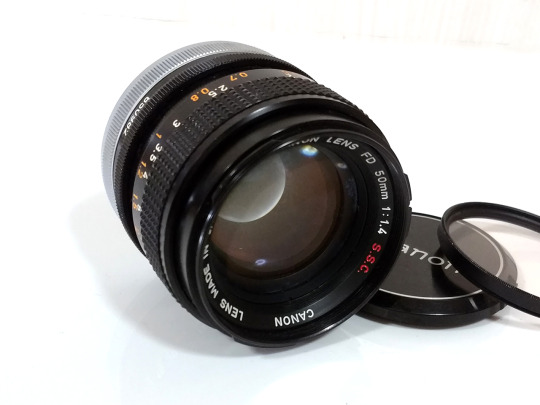
CANON FD 50mm F1.4 S.S.C. (I) FD-Mount Manual Focus Lens in March 1973
0 notes
Text


A little Mushroom. I've used my dad's old Canon fd 50mm 1.4 lens from the 70's, mounted on my modem Sony camera. Sweden, Uppland.
#myphotography#original photography on tumblr#sverige#fineartphotography#Monochrome#blackandwhite#blackandwhitephotography#vintagelens#NaturePhotography
14 notes
·
View notes
Text

Written and directed by Elena Oxman, “Outerlands” follows Cass (Asia Kate Dillon), a nonbinary individual struggling with multiple jobs to survive. After a hookup with Kalli, a co-worker they’ve been interested in, Cass agrees to watch Kalli’s eleven year old daughter, Ari, while she travels out of town. In the following days, as Kalli seems to disappear from the face of the earth, Cass and Ari’s bond grows, unearthing Cass’ long repressed memories of their own tumultuous childhood. In advance of the film’s SXSW premiere, we connected with cinematographer Lucia Zavarcikova, ASK, to discuss the process of making “Outerlands,” from how to best manage stress on set, to shooting over 35 locations on an indie budget.
"Outerlands" was filmed with the Sony Venice and Rialto. What drew you to this combination and camera platform? I was looking for a camera that can perform well in low light scenarios and can be versatile when it comes to mounting it various places. With over 35 locations in 'Outerlands,' San Francisco itself became a character in the film, and I knew I wouldn’t always have full control over lighting conditions. The Venice allowed us to capture our characters authentically in the streets, where our schedule didn’t permit extensive lighting setups. Rialto on the other hand, gave us the ability to achieve specific shots we planned in tight spaces. One instance that stands out is a handheld sequence set in a bathroom stall at an arcade—a pivotal and vulnerable scene. The Rialto allowed my camera operator, Dae Hyun Kim, to stay engaged with the performances while giving the actors freedom to move naturally.
You shot with the GL Optics Canon FD primes. What led you to choose these lenses specifically? I needed lenses that cover a large sensor, are fast and have a certain “nostalgic” quality —something that was an essential visual component of our film. That, in combination with some budget restraints meant that FDs were a clear winner after many rounds of testing.
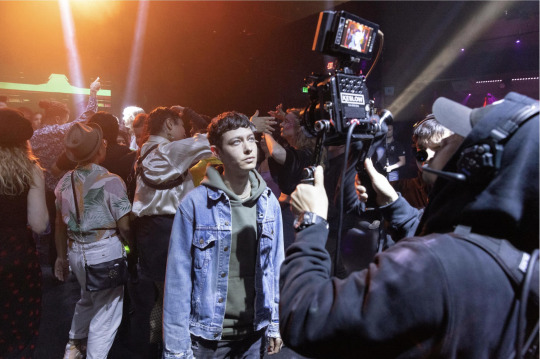
When it comes to your experience making "Outerlands" in particular, how did working with Keslow Camera help bring the film to life? Were there any challenges during the production that Keslow was able to alleviate? Working with Keslow Camera is always a fantastic experience, and 'Outerlands' was no exception. Given our tight budget and the need for extensive testing before shooting, Keslow provided us with the camera package nearly two weeks in advance. This was crucial for fine-tuning our approach. A great example of this was the period-accurate CRT TV, an important visual element reflecting the protagonist’s childhood video game, Outerlands. Having the camera early allowed us to test how it would be captured on screen. Additionally, our main apartment set was a mix of a real location and a build, requiring careful consideration of color and texture. Having access to the Venice and the FDs early on helped our production design team, led by Jamie Mayne, refine elements like wall colors and curtain types, ensuring they looked in sync with the emotional arc of the main character on camera.
Is there anything about the experience of making "Outerlands" that has impacted your creative process going forward? Absolutely. Every movie has been a huge lesson learning experience for me so I’m grateful for the diversity of problems I’ve faced that has allowed me to improve. The biggest challenge was the sheer number of locations we had to cover in a limited timeframe. To stay efficient, we had to refine our setup and pack-up process significantly. My incredible camera team—Steadicam/camera operator Dae Hyun Kim, 1st AC Lawrence Ma, 2nd AC Leo Lopez, and DIT Alex Zajicek—was instrumental in keeping everything running smoothly and ensuring we were always ready to go very fast.

What advice would you give to aspiring cinematographers who are inspired by your work? When it comes to things that would have been helpful to hear earlier in my career, I always like to think of my long time mentor and friend Steve Condiotti, who’s many pieces of advice helped me to embrace difficult situations and focus on what’s really important. One day I called him on the way to set for my first bigger commercial job that I was very stressed about and felt myself teetering on the edge of panic because of everything that could go wrong. I started rapid firing my thoughts and he stopped me and said “Lucy, this is our job.” It might seem a bit silly but that one sentence has literally changed my approach from thinking “if I had more time” or “if I had better gear” to adapting to the limitations and focusing on what’s in front of me. So if I had to distill it to one sentence, it would be to embrace the circumstances and focus on what’s important - the images we create.
Are there any members of the "Outerlands" camera department or production team in general you’d like to acknowledge for their contributions to the project? I’m very grateful that Elena Oxman, the writer/director of 'Outerlands' invited me to help bring this beautiful story to life. Ever since I first read the script, I knew that I had something very special in my hands and I couldn’t be more excited that I got to work with Elena. I’d also love to give a huge thank you to my long term collaborators and friends, gaffer Matthew Barauskas and "A" steadicam/camera operator Dae Hyun Kim, who always bring their expertise, creative approach and upbeat energy to any project we do together. People say that the DP is only as strong as their team and I couldn’t agree more, none of this would be possible without the great team that poured their heart and energy into creating 'Outerlands.'
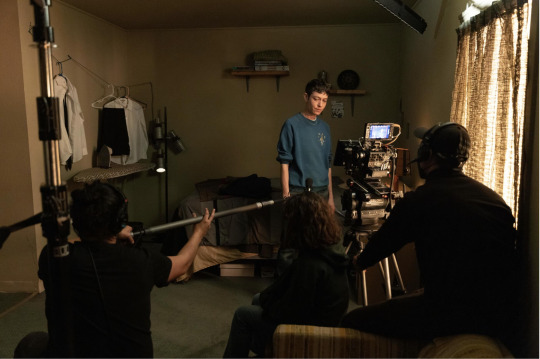
Are there any members of the Keslow Camera team you’d like to acknowledge for their support of the project? Of course I have give a massive shoutout to Sean Jenkins (Business Development, Los Angeles), whose support has been essential to my DP journey throughout the years. We’ve done many projects together at this point and Sean’s been there for every single one, always figuring out how to get the best possible tools, while keeping the process lighthearted and easy. I really cannot overstate how grateful I am for Sean and Keslow Camera’s continued support. [x]
2 notes
·
View notes
Text
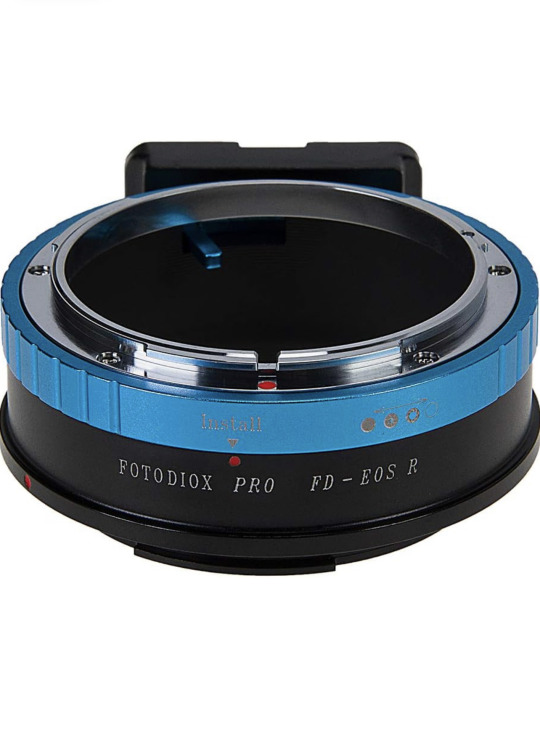


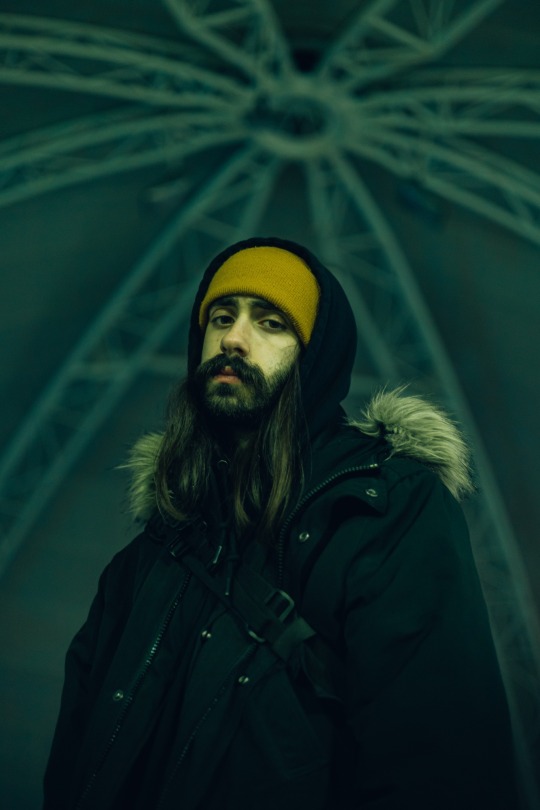

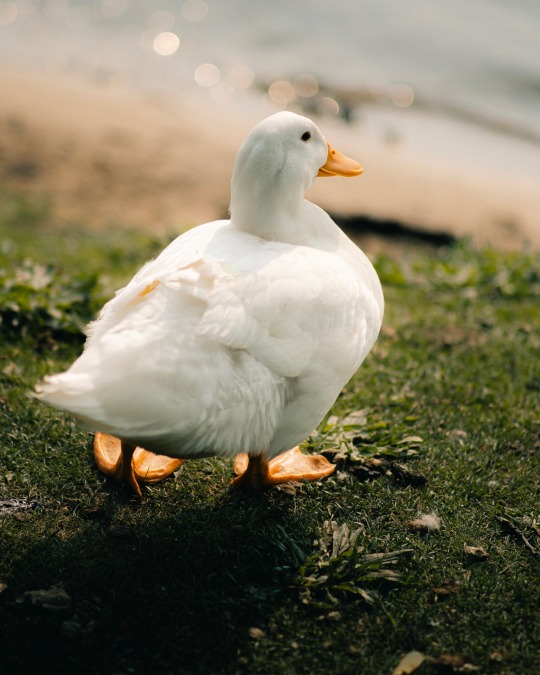
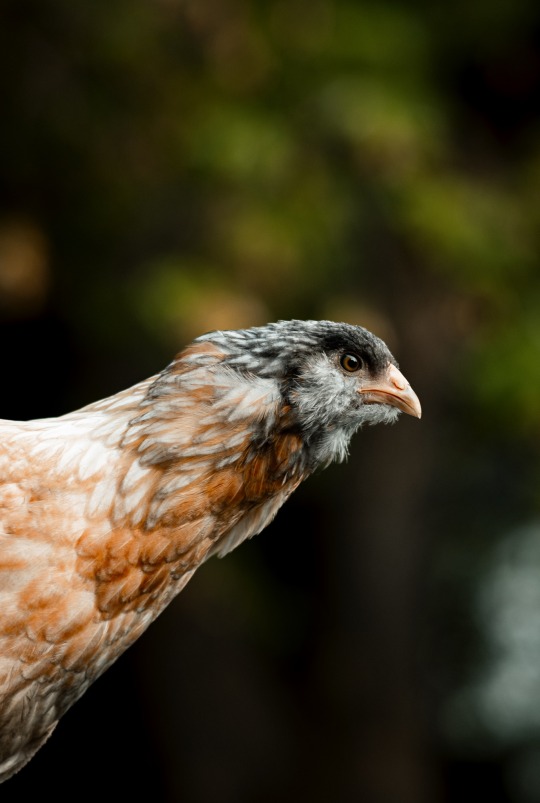

So this Christmas my girlfriend got me this cool adapter that lets me adapt Canon FD lenses to my Canon EOS R. So basically I can use vintage film lenses on my mirrorless. Honestly I’m in love with vintage glass, I have only a hand full of them, but I never spent more than $50 on any lens and the images that come out are amazing. I had a couple of my photography buddies completely blown away that I’m using vintage lenses. Here are two of my favorites, my 50mm f1.8 and my 135mm f2.5. Both super clean, take amazing photos, the bokeh is butter and you can’t tell if this is a modern lens or a vintage lens. My 50mm is a perfect for not only portraits, but great for street photography. My 135mm is perfect for nature and wildlife photography. Not something I do a lot of, but would definitely love to do more of it, but mainly because I own a 135mm for it. I hope to get a 300mm one day as well. Now there is some cons and pros for using vintage lenses. Pros are, not as expensive as modern lenses, like I said I never spent more than $50 on a lens. There are some great ebay deals out there, there are some very expensive FD lenses, that run in the $1,000’s, but those were for making movies. You’re not buying cheap plastic, all these lenses are well made and made of metal. You don’t have to use Canon name brand lenses, as long as it has the FD mount, there are other brands out there that are nice in price and still have the same image quality. Now for the Cons, all the lenses will have to be manual focus, now that is pretty obvious to a lot of photographers, but this is something a lot of photographers will not like and will miss autofocus. Taking videos, there is no auto stabilization, so you will need a gimbal and you will have to manually focus as recording. It can be done and I’m sure that will not bother others, you can buy an adapter with built in autofocus, but that’s $300 for that. Another thing is shopping for the right lens, now I normally recommend ebay, just make sure you read the description. Since these lenses are old, they can develop dust in the glass and fungus. Also I have read where some actually have mold in them, but message the seller if they’re description is vague on the lens. Another con is these will make your weather sealed or weather proof camera not weather sealed or proof. I definitely learned that the hard way one photoshoot. I got a little moisture on my sensor one day when it was raining, thinking I would he good because I’ve shot before in the rain with my RF lens and was completely fine. Now for the last con, some of these lenses are heavy! My 135mm is super heavy, because they are made a of metal and not the cheap plastic you spend $1,000’s of dollars on. So trying hold focus on hold the lens is a sometimes a struggle. I linked the adapter up top of this post and they sell other adapters for other cameras as well.
#photography#canon photography#flint michigan#street photography#canon eos r#photography by#midwest#50mm#vintage lenses#canon fd
5 notes
·
View notes
Text
Canon Compatible: the RF mount can accept adapted EF mount lenses. The M mount can accept adapted RF and EF lenses. RF lenses cannot be adapted to other mounts without losing infinity focus. Older FD lenses can be adapted to RF and M mount bodies but with no automatic functions.
Within these limitations, -s indicates compatibility with only crop sensors. For example, a crop body EF mount camera can accept EF and EF-s lenses, but a full frame EF mount camera can only accept EF lenses.
Canon compliant
Canon compatible
Canon complacent
Canon comparable
Canon compulsive
Canon competitive
Canon competent
Canon compassionate
Canon complementary
Canon comprehensible
Canon companionable
Canon compressible
Canon complexifying
Canon compensatory
Canon complicit
8K notes
·
View notes
Text
Uhh...
Film photography.
It's kinda badass. I've gotten into long philosophical discussions with my girlfriend about the... I guess the symbolism of having a physical impression of the universe, captured in chemistry, as a one of a kind object that you can touch.
It's so unlike digital photography in many ways, but I suppose the fundamental variables are the same.
After getting into cameras a bit with a Sony Mavica FD-92 because a friend of mine named Emma had one and made me want one, I started buying accessories for a 13 year old Samsung point and shoot I've had sitting around for a while, and then decided that film photography was the direction I wanted to go in.
Luckily my birthday was coming up and my girlfriend was kind of NOT hyped about the idea of getting me another laptop because I already have nearly a dozen of them, so we looked into some film cameras and settled on a true legend, the Canon EOS 650.

A piece of history from Canon, this was the first ever EOS camera, and introduced the autofocus capable EF lens mount in 1987. It was shortly followed by the EOS 620, which had an intentional double exposure mode instead of a focus depth mode, and then the EOS 600 which had a number of preset shooting modes. It stayed in production until 1989.
This particular example was imported from Japan for the pretty reasonable sum of $35, and it's in perfect working condition and a good cosmetic condition as well. Pair that with an incredibly versatile, but slightly heavy, Tamron 28 to 200mm lens, a cute bag with trippy patterns on it, and a strap with embroidery of flowers, and I've got myself a pretty decent set of kit. Oh, and a 2CR5 battery. Can't forget that.
My original plan was to shoot some expired trial-size 12 exposure rolls of Kodak black and white film to get some experience under my belt before I went for the full-length rolls of Ilford HP5 Plus but those would have taken too long to arrive (and turns out these are C41 black and white film rolls???), so I decided I was gonna go walk around my neighborhood and shoot some film with my little brother. But my first subject would be Midnight, a sweet outdoor cat that lives in our neighborhood.

As we continue, I shoot a fire hydrant, the reflections in a puddle, and some shots of a bridge that's about a quarter mile from my house.



I took some pictures of my little brother too. One is a portrait of him, which turned out very well, another is a shot of him from behind walking towards this bridge, one with him looking contemplative looking off the bridge, and another was him walking across the street in front of our house like the classic bigfoot photo.
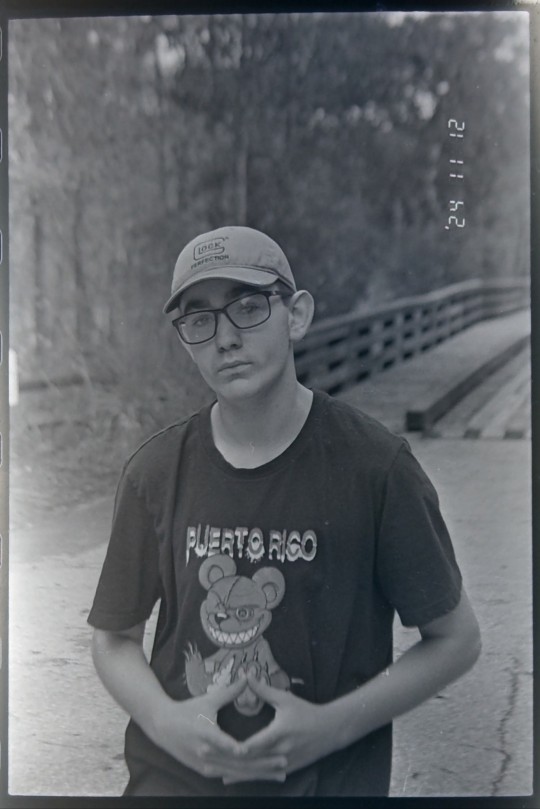
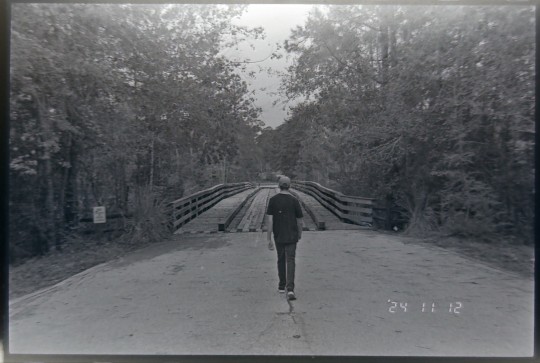

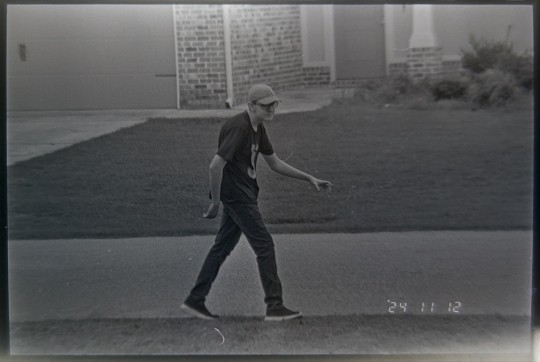
There were more, but I haven't scanned those negatives yet because my scanning setup is my phone and, well, this...

0 notes
Text
001: Setting the Context
This is a space that I will use as a learning journal of sorts regarding my photography. The idea is to etch down any learnt lessons and keep a perpetual tab on any developing ideas or musings, rather than leaving it all to be ephemeral. Hopefully, after some time, any patterns in my thinking or methods --be it good or bad -- that would usually be missed, are here and made apparent to me.
Here is where I'm at, at this very moment.
I shoot stills in both film and digital.
With film, I shoot 35mm and 120, most of my work is made with 35mm SLRs consisting of Canon nFD and assorted but mostly Takumar M42 lenses. I started shooting film with a Canon T70, then an FTb and now an A-1 and T90, but with the FD lenses becoming expensive, I found out that I could adapt M42 lenses to my FD cameras, and started down that path. Nearly two years later I have a handful of Super-Multi-Coated Takumars with coverage from wide angle to short tele, and some of the more popular, relatively unexotic USSR and East German lenses, such the Helios, MIR, Industar, Trioplan 50mm and Pancolar. Having gotten sick of the often inaccurate exposure due to my FD cameras meters not being able to accurately meter stopped down at small apertures, I sourced a Praktica MTL5B to use my M42 lenses with natively, solving the inaccurate stop-down metering problem. I have since built up a wide to normal coverage of nFD lenses, and enjoy the two systems for the different looks they achieve -- the nFDs being more 'normal' and natural while retaining film-era glass characteristics, the S-M-C Taks having a slightly less natural but more characterful look, and the USSR and East German glass having more character and less fidelity still.
As for 120, I started with a Yashica Mat, and loved the look of medium format straight away. Wanting more versatility, I sought out a system medium format camera, and being priced out of the ideal Pentax 67, I bought a Pentacon Six and two lenses, the 80mm f/2.8 and 50mm f/4. Before long, the cons of the system outweighed the pros, and I sold it when I picked up a Pentax 67 with the 105mm f/2.4 and an SMC 67 55mm f/4 for a price I couldn't turn down. I love this system and hope to build it up with more lenses.
I have some 35mm point and shoots and other oddities like my Nikonos and Olympus XA, but these are only in use now and then.
Up until last year, I had only gotten Frontier JPEGs back from the lab, but now I get Nortitsu TIFFs to process them in Capture One and have more control over my output.
With digital, my first camera purchase was a Fuji XF10, which I used for about a year as well as an X10 and X20 before feeling very limited by their fixed lenses, and bought an X-E3. I very quickly bought a couple of its native lenses, the 27mm f/2.8 (mark 1) and XF35mm f/2. I used these lenses sometimes (and still do) but mostly I have used my vintage film glass via adapters. I was attracted to Fuji from the outset because of their famous 'film-like' JPEG profiles, which I used for some time before feeling I needed more control over the output. So, in April 2023, I bought a laptop and a Capture One subscription, with the goal to have my digital output look as film-like as possible. To this end, I spent some money on a Styles (Capture One lingo for presets) pack from Really Nice Images, but found them quite lacking.
Around this time, I was feeling quite restricted by the X-E3 in that I had a few vintage wides, but due to the crop factor of the Fuji, my widest lens --a 24mm -- became a 36mm, and with the native X mount lenses being out of my price range, that was the widest I could go. With this thought, and others about a more up to date sensor, video capability, and the potential lack of longevity of my Fuji, I decided to go full frame. I bought a Sony A7iv to use with my vintage glass at their full potential, and within the last few months, a Dehancer licence to further my film emulation goals.
What do I aim to achieve in my photography?
This is something I have written about recently for the Silver Halide 'Five Years of Silver' Community Exhibition, so I will just put that here.
I am based in the Swan Region and lean towards documentary-style photography while occasionally shooting editorial and gigs. I have aphantasia -- this means I have no visual memory or imagination, which heavily informs my photography, and often makes it challenging. Capturing and compiling fleeting and even mundane moments has become invaluable to me as time goes on. I love film because of the inherent look and (primarily regarding colour neg) its latitude, and the texture and often infidelity of vintage glass that promotes a gentle subjectivity to the people and places that I shoot. For the longest time, I thought of my photography as a means to tell the stories of others, but as I go on I am realising how much it has always been about me and my relationships with subjects, arguably even more than the subjects themselves -- people and places, the relationships complex and loaded or simple and plain -- but always subjective. Because of my aphantasia, I cannot internally manifest these relationships in a visual sense, so doing so in photographs makes them a tangible expression of my experience.
To go on from that, my aim in photography is to produce work that rings *true* to me and my sense of being, to visually represent how I feel about something, some place or someone, and capture the nature of that relationship. Because of this admittedly self-centred guiding principle of what my photography is about, I am conscious of the fact that it may not necessarily be very appealing to others. This is something that I have thought about a lot recently, and at the moment, am unfazed by.
Regarding film, I think I am most attracted to film (and film emulation) as the means to capture my photography for the reasons above and also as a sort of retaliation against the clinical and computational direction popular photography has been and will continue to head into for the foreseeable future, it seems. Even though there is the digital element of the interpretation of a negative and post processing in my film workflow, there seems to me to be more authenticity in using film as a base.
In saying that, I don't write off digital either, and I swing between preferring film and digital as a base quite a bit. My problem with a lot of work made with digital is that modern cameras and optics are so advanced now that photos are so technically perfect, which is incredible! But when the work is left perfect, you are left with a product that is exclusively about the subject, left in the most boring terms. What is the meaning of the work, other than look at this? To me, the lack of subjectivity kills the depth, unless the lack of subjectivity is an artistic choice in the first place. In my opinion, modern cameras and optics, used without intention, removes a lot of the artistry in photography.
I enjoy using digital as a base because it is way more versatile than film (until it isn't, regarding highlight retention) under most circumstances, and it is almost always with a vintage lens and run through film emulation software to get away from the clean, objective look you get out of camera.
What am I finding most challenging at the moment?
I'm finding it quite challenging to get a consistent and subtle enough look out of Dehancer. Sometimes it really hits, and other times it just doesn't seem to look good no matter what I do. This is something that will be talked about here for sure.
end
27/09/2024
1 note
·
View note
Link
Check out this listing I just added to my Poshmark closet: Deitz 135mm MC Zoom 1:2.8 Camera Lens Canon FD Mount With Case No. 815359.
0 notes
Text
Revival of Vintage Lenses: The Latest Trend, Digital Photography
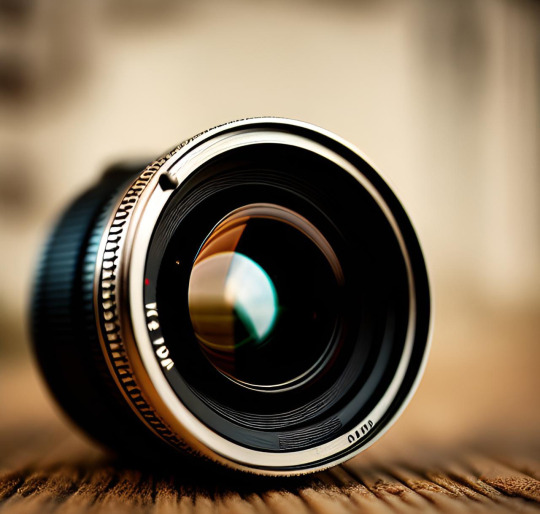
**Revival of Vintage Lenses: The Latest Trend in Digital Photography**
Welcome back to my digital photography blog! Today, we're diving into one of the most intriguing trends reshaping the photography landscape: the revival of vintage lenses. This trend blends the old with the new, offering photographers unique creative opportunities and distinctive visual styles. Let's explore why vintage lenses are making a comeback and how you can incorporate them into your photography toolkit.
### The Allure of Vintage Lenses
#### Unique Optical Characteristics
One of the primary reasons photographers are drawn to vintage lenses is their unique optical qualities. Unlike modern lenses, which are designed to minimize flaws and produce clinically sharp images, vintage lenses often have imperfections that add character to photos. These can include:
- **Soft Focus:** Many vintage lenses produce a softer image, particularly at wider apertures. This can give portraits a dreamy, ethereal quality.
- **Swirly Bokeh:** Certain vintage lenses, like the Helios 44-2, are famous for their distinctive bokeh patterns, which can add an artistic touch to backgrounds.
- **Chromatic Aberration:** While generally considered a flaw, chromatic aberration (color fringing) can sometimes enhance the aesthetic of an image, giving it a unique look that modern lenses typically avoid.
#### Build Quality and Aesthetic
Vintage lenses are often built with metal bodies and manual focus rings, providing a tactile shooting experience that many photographers find satisfying. The craftsmanship of these lenses is typically robust, and their classic design adds a nostalgic aesthetic to your camera setup.
### Adapting Vintage Lenses to Modern Cameras
#### Lens Mount Adapters
To use vintage lenses on modern digital cameras, you'll need a lens mount adapter. These adapters are readily available for most camera and lens combinations. Here’s how to choose the right adapter:
- **Compatibility:** Ensure the adapter matches both your lens mount and camera mount. Popular mounts include M42, Canon FD, and Nikon F for lenses, and Sony E, Canon EF, and Micro Four Thirds for cameras.
- **Quality:** Invest in a good-quality adapter to ensure a secure fit and to avoid light leaks. Brands like Fotodiox and Metabones are known for their reliable adapters.
Manual Focus and Exposure
Most vintage lenses are manual focus, which can be a learning curve for those used to autofocus. However, this can also be an advantage, as it encourages more deliberate and thoughtful composition. Many modern cameras have focus peaking and magnification features to assist with manual focusing.
Additionally, vintage lenses often lack electronic contacts, meaning you’ll need to adjust exposure settings manually. This includes setting the aperture on the lens and adjusting shutter speed and ISO on your camera.
Creative Benefits of Using Vintage Lenses
Enhanced Storytelling
The unique characteristics of vintage lenses can enhance storytelling by imparting a distinctive mood or atmosphere to your images. For instance, the soft focus and warm colour rendition of a vintage lens can evoke nostalgia or romance, making it perfect for portraiture and lifestyle photography.
Experimentation and Learning
Using vintage lenses can reinvigorate your creative process. The need to manually focus and set exposure slows down the shooting process, encouraging more thoughtful composition and a deeper understanding of photographic principles.
Cost-Effective Quality
Many high-quality vintage lenses are available at a fraction of the cost of modern equivalents. This allows photographers to expand their lens collection and experiment with different focal lengths and styles without breaking the bank.
Popular Vintage Lenses to Explore
- **Helios 44-2 58mm f/2:** Known for its swirly bokeh and sharp central focus, this Soviet-era lens is a favorite among portrait photographers.
- **Canon FD 50mm f/1.4:** This lens offers excellent sharpness and beautiful background blur, making it ideal for portraits and low-light photography.
- **Minolta Rokkor 58mm f/1.2:** Renowned for its build quality and pleasing bokeh, this lens is a great choice for those looking to experiment with shallow depth of field.
Conclusion
The revival of vintage lenses in digital photography is more than just a trend; it's a movement that celebrates the artistry and craftsmanship of past generations. By integrating these classic lenses into your modern workflow, you can achieve unique optical effects, enrich your creative process, and produce images with a distinctive charm that sets your work apart.
So, dig out that old lens from your attic or visit a second-hand camera store, grab an adapter, and start exploring the endless
creative possibilities that vintage lenses offer. Happy shooting!
#disabled artist#photographers on tumblr#art#digital art#landscape#artists on tumblr#my art#original art#photographer#adobe photoshop#art blog#blog#vintage#vintage photography#vintage lenses#informative#information#interesting#social#past#cameras#lightroom#nikonphotography#photography
0 notes
Text

CANON New FD 24mm F2.8 Manual Focus Lens
0 notes
Photo

New on Analog.Cafe: "Canon FD 50mm 1:1.4 S.S.C. Lens Review: A Special Look; an Affordable Cult-Classic!" — Canon FD 50mm 𝒇1.4 S.S.C. are the second-generation breech-lock mount “normal” lenses for the popular Canon AE-1 35mm film SLRs and FD-mount cameras. Their glass renders distinct bokeh, has decent flare resistance, comes with plenty of contrast, and is quite sharp when stopped down. The S.S.C.-marked lenses are the relatively rare and typically cost more than the standard “new FD” (sometimes marked as nFD) 50mm 𝒇1.4 lenses. But not all S.S.C. lenses are “chrome nose.” — [ Click the link to read the full post. ]
1 note
·
View note
Text
As kindly asked by @nadiuu (thank you so much for the encouragement😭💖), here are snippets for the unpublished fics in my wip folder.
I swear, I wasn't trying to be flaky, I just thought and thought about what to post and then wanted to polish those scenes and finally between last night and this morning I had a little time to chill, I'm so sorry for the delay!😢
(they're long so if anyones interested pls find them under the cut, apologies for any mistakes)
Ok, this first one is from In Your Wake (which is just a retelling of canon but slightly on crack bc ofc), specifically from the boys' first meeting, I chose it bc it was quite simple, kinda cute and funny<3
"W-what am I doing here? I'm just good at maths..." Ah, Logical— they weren't exactly replacing little ol' Mello, then. "And programming and music and engineering, a little bit." "Jesus— okay, point taken, I'm a switchblade, you're a Swiss knife!"
The shorter boy almost made the same unsettled face as before, but then a corner of his lips curled up, snaggle tooth showing... Disgust? Amusement? Disbelief? Before he could rule out the former, that expression also vanished in a flutter of long lashes. "That's not the point. I am nothing like..." Mello could take it. In fact he'd taken much worse, but Matt only waved his hand vaguely. "Like this." "No one's like anyone here." As much as he wanted to drop the act and start biting before Matt gave him a reason to bite back, he couldn't bring himself to be mean to the new kid. He'd never considered a feeling like this could strike him. It was very strange, totally unlike him, couldn't be good. And yet the only animosity he felt was towards himself, his own lack of control, his pervasive ugliness— especially if reflected in the beautiful eyes before him. "So you're the only one who stabs people. That's comforting..." The observation lilted with a musicality he had to fight not to find endearing, instead of just interesting— what was this boy doing to his carefully curated evil thoughts??? He forced a grin. "I'm not, actually. Just the best at it."
Matt sighed in resignation and looked down at the lively garden below with a pensive little scowl.
"You can always drop out and get adopted, you know." He paced like Roger, trying with what old man surely hadn't informed Matt about. "If you fuck up worse than I did and or can't keep up with the courses, that is..." He side-eyed him for a reaction, but the other boy barely turned back to him, like he no longer had a care in the world, as the timid springtime sun shone warm vermillion through those dark curls, kissed the elegant contours of his face...
"Mh, I'd rather just be your next victim." The newbie had the gall to wait for Mello to smile before smirking himself, set his cheeks ablaze once and for all. This Matt was dangerous... A rascal, no, a criminal, just like him. Why hold back, then? "Stealing my room and all, you mean?" With a short run-up, he joined the other on the sill, making him jump a little. "What if I had a deal for you, instead?"
This next one is from W.I.L.A. (basically a bunch of hcs for what M got up to during the timeskip in a trench coat), and I picked it bc it's one of the least fd up and most linear scenes taken out of context, so you can figure what a thoroughly poisoned clusterfuck this story is lmaoo
Alex bit his tongue, spun around just to face the door, already forgetting what a tight, tight spot they were in.
Mello leaned forward, though, ready to remind him.
“I’m a dancer, Alexander! That’s all I am.” The sting of tears came easy with that sentence, and when the princeling looked back, he watched confusion and sorrow flash on his face. He stood up. “It’s what I do, and tonight I did it for you!” Scared of his girl, wasn’t he? Of the mounting anger ripping up her breaths at the words that’d come out of her mouth next, for him to hear but not make sense of. “But don’t worry, that was the last time...” It was Alex’s voice that faltered, Emma was too proud for that. “What are you—” In the second it took him to decide if he was being dumped or proposed to, Mello grasped at his blazer and yanked the CZ out of its holster, fumbling with the safety just long enough to find the other’s hands between his, grabbed one, placed the gun and put it to his darling’s temple. Sky blue eyes widened in almost comical horror, as her crazed, crying ones were all he saw. Mello's shoulders trembled with mirth, but his face made it look like desperation, he knew because it was mirrored.
Get used to it. Didn't even feel that bad now, did it? The heat, the rush, the irresistible pain of violence. It'd better burn new pathways through his mind. “Do it.” Alex shook his head- Mello squeezed his finger harder, snug and curled over metal, a string of ‘no’s promptly falling from the boy’s lips. Back and forth they went, as one tried to pull away and the other pulled him in closer, muzzle digging into his skin, pressure adding up, between their bodies as against the trigger. He was all so tense, so hard, except for where he most should've been. Guess there was a first time for a private dance to get him soaked and his customer only leaking from the eyes, too, but goddamn, how could this idiot be so useless? “I’m just not good enough, am I? Not for you.”
🥲
WIP GAME
Rules: In a new post, list the names of all the files in your WIP folder, regardless of how non-descriptive or ridiculous. Let people send you an ask with the title that most intrigues them and then post a little snippet of it or tell them something about it! And then tag as many people as you have WIPs
Thanks for the tag @ccmatta💛
i just wanna say, two of these are wips I am actually working on almost every day but highly doubt they'll ever see the light of ao3 so uhm bear witness to their existence this way ig lmao
Keehlmas Shopping
Who is Ludmila Anker?
In Your Wake
Tagging: @theoldworldsrunnerup, @vengeflies, @transbb✨
10 notes
·
View notes
Text
I've been lusting after a Leica Q2 for a while even though I don't shoot digitally. I honestly don't know what it is about that camera that makes me want it but I WANT IT.
I absolutely positively can't afford it and honestly I don't even know if I'd like shooting with it anyway, since it has that fixed 28mm prime lens and that's really wide. My main lens recently has been my Canon EF 28–105 mm but I tend to use it more in the 50-75mm range rather than super wide, and I don't like using it for street photography because it's not exactly unobtrusive.
I was looking into buying a 28mm prime but even the Canon f/2.8 starts at about £120 used, and I just don't have that.
BUT
I had a realisation.
A few months ago I picked up a Canon AE-1 Program for an absolute steal. It unfortunately doesn't work - the shutter doesn't fire and it can't wind on, a very common problem that can be fixed with a service. Even more unfortunate is the fact that I can't afford to service it. But it did come with a few lenses that looked pretty nice, and I wanted to try them out. The AE-1 uses the FD mount rather than the EF mount on my 500N, so I picked up a converter.
It turns out that vintage FD lenses are pretty fucking cheap. I'm currently bidding on a Sigma 28mm f/2.8 and it's looking like I'll get it for under £20. It's also not the smallest lens in the world, but it's much less obnoxiously sized than my 28-105mm and having a prime will force me to get comfortable with that focal length. And then one of two things will happen: I'll find I love it, and I can start saving to buy a Leica in like...5 years. Or I'll find that actually I really hate it, and then the desire to get the Q2 will magically dissipate.
I do wish I could find a slightly faster lens, but f/2.8 is still pretty quick (and probably more than fast enough for my purposes). But if anyone knows any good vintage 28mm lenses that can be had cheap (i.e. less than £50ish) and that use a mount for which converters to EF mounts exist (and that's EF, not EF-S), please do let me know!
0 notes
Text
[NEAR MINT] Canon T90 BLACK Body 35mm SLR Film Camera For FD Mount From JAPAN
CAMERA DEALS: Seller: vintage_camera_shop.s_japan (100.0% positive feedback) Location: JP Condition: Used Price: 159.99 USD Shipping cost: 50.00 USD Buy It Now https://www.ebay.com/itm/354851370580?hash=item529eca3654%3Ag%3AJZMAAOSwE9pkix-A&amdata=enc%3AAQAIAAAA4OIR3DveiTDEMrC%2BH4Ts50iMNZ7GvYlD3gjT9WImlZGjlPvGRIlVM6AOna755wp0iZ%2BbrrF%2FUyhfsZ55h2oNcM9kmZfY89J0RCI8BsBEDH5IaTaHAccnaVGwYRdzhm%2F64nu1X9Pn3imB99Io6d1BcHdPuSgwKp8fSZyzUAtAtVWV9dh46GrXsQlsjizPXY%2Bs1ewCuC4FIK2csJSat2tHlQYmB34MhU5EnSnH8H%2BtoRWY6ybFIAw%2BtNgRe%2B3O8puSMdFBoFUdG9wm5daS1mhTkYPV9zljmSsRdH%2BOyAOahGrf&mkevt=1&mkcid=1&mkrid=711-53200-19255-0&campid=5338779481&customid=&toolid=10049&utm_source=dlvr.it&utm_medium=tumblr
0 notes
Video
Warm Arrival by Hayden Williams Via Flickr: Canon AE-1 FD 50mm f/1.8 Lomochrome Purple Haneda Airport This was the first thing I saw in Japan //INSTAGRAM// //WEBSITE//
#fuji#mount fuji#mt. fuji#fujisan#mountain#sunset#sunrise#dawn#dusk#twilight#beautiful#surreal#night#airplane#haneda airport#film#analog#analogue#canon ae-1#fd 50mm f/1.8#lomography#lomo#lomochrome purple xr 100-400#purple
3 notes
·
View notes
Photo


- Mount fuji of 3 years ago -
Camera: Canon AE-1 Lens: FD 50mm Film: Fujifilm commercial color film 100/36 Date taken: May 19, 2018 Correction program: Photoshop CS5
I'm not doing photography very well because of my work these days. Three years ago in May, I played in Tokyo, Japan for two nights and three days, and on the last day, I took a picture on an airplane while returning home. Mount Fuji is always amazing and beautiful to see. I think I'll be upset these days because I can't even go on a trip I want to go because of Covid-19. Still, everyone has to work hard.
#2018#Japan#Tokyo#fuji mountain#mount fuji#sky#afternoon#film#canon#canon ae-1#ae-1#Fujifilm#film 100#fd 50mm#2018 year
2 notes
·
View notes